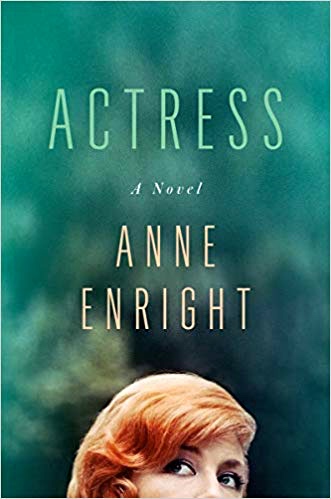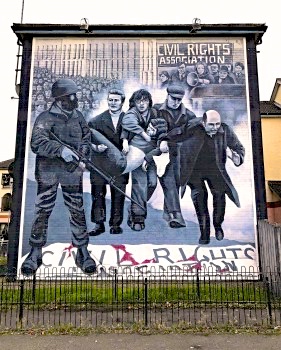Note: Anne Enright was WINNER of the Irish Novel of the Year Award and was SHORTLISTED for the Bailey’s Women’s Prize for 2016. She is a previous WINNER of the Man Booker Prize.
“My books have become, over the years, more simple and unassuming….[and] people like them, even though they are not true. They are the lie I need to tell, nothing happened, oh look! Nothing happened again, there is nothing to see here, ladies and gentlemen, keep moving along.” – Norah FitzMaurice, author and main character.
 Author Anne Enright, the real-life Irish author of this novel about fictional actress Katherine O’Dell, recreates the “life” that Katherine led publicly as opposed the “real” life she is said to have kept hidden.
Author Anne Enright, the real-life Irish author of this novel about fictional actress Katherine O’Dell, recreates the “life” that Katherine led publicly as opposed the “real” life she is said to have kept hidden.
Enright, a superbly controlled author, faced a daunting task in creating the lives of her characters here without resorting to the sensationalism her main character/author Norah FitzMaurice scorns. Throughout her career, Enright has specialized in showing the values and attitudes at play within complex but intimate family dynamics, varying her points of view and time frames to allow the reader to draw conclusions about one character because of events which reflect the lives of other characters in other generations and times. She is often so subtle that readers become lulled into sharing the lives of her characters before they have a chance to evaluate who and what the characters are doing and saying and what this means about life and their attitudes toward it. In Actress, Anne Enright is especially concerned with the fictions people create for their own reasons, including fame. Three generations, reflecting different times and points of view, make this novel a complex study of how people often recreate their own memories to make them more palatable, while drawing conclusions, often false, about the realities of other people.
As this novel opens, Norah, the writer-daughter of famed Irish actress Katherine O’Dell, admits that her mother, the subject of Norah’s late-in-life biography, is a “difficulty,” – someone Norah still does not fully understand. Norah has written five well-received novels since her mother died in 1986, at age fifty-eight, and even after thirty years, her own books are still described as having been “written by the daughter of Katherine O’Dell.” She describes her characters as being “slightly nondescript,” people who “rarely have sex and they certainly do not attack each other. They just realize things and feel a little sad.” Now the same age that Katherine was at the time of her death, Norah is trying to put Katherine’s life into perspective, in order to gain better perspective on her own life. She has long known that Katherine was less than honest about much of her life. She knows that her mother was not Irish at all, having been born in the Herne Hill area of London. Her red hair was not naturally red, and her Irish accent was a studied affectation. Other, far more important, diversions from the truth governed Katherine’s life and death, however, and even Norah has never learned the name of her own father. As she thinks about writing her book, Norah admits, outright, “I do not know how I can quell, in myself, the rage, the rage, the rage.”
The novel opens in a conversational, casual tone, as Norah speaks directly to the reader about her mother, Katherine, as she eats toast, smokes, and talks on the phone about everything being “marvelous,” while Norah herself, aged eight or nine, concludes that her mother is a star. “Not just on screen or on the stage, but at the breakfast table also.” A quick shift within the same section moves to Norah’s twenty-first birthday party in Belfast, where everyone present is staring at her mother. For Norah, it is a “terrible party,” with the people there representing “various types,” the women not as glamorous as they used to be, the men as “theatre types,” and everyone showing off, while Norah herself thinks about a boyfriend who has just left her for good. Everything at the party has been staged and photographed for publication, and Norah notes that her mother is forty-five, at this point, and “finished,” professionally and sexually. Viewing her writing critically, Norah then comments in the next paragraphs that she is “getting ahead” of herself, so she switches to the present and mentions that her mother had been committed to a mental hospital in 1980 after an assault on a film producer whom she shot, a beginning that certainly sets the stage for some major developments.

Bloody Sunday (1972) memorialized in mural by Payton Walton, 2018, showing hero-priest Fr. Edward Daly in Belfast and men carrying body of young victim.
Shortly after this section, Norah is dealing in the present with a researcher doing a thesis on her mother, which she hopes will one day become a book, and she mentions that in the 1970s her mother “liked to hang out with IRA men in New York and Boston,” something that was a scandal in Dublin at the time. Several references follow, addressed to “you,” a person not identified but probably Norah’s husband, since she follows that with references to her “huge, teenaged son” and his sister. The next day she leaves Ireland for London and the beginning of her work on her book about her mother, who made her acting debut by playing a crocus at age ten in a chorus of spring flowers at the Royalton Theater, London. After this, Katherine is never really off-stage, even having showy picnics at a local park, events which Norah considered constant scene-setting. “She did not need to pretend to be my mother, when she was my mother already. That was like double cream.” Other early scenes depict her father, who was a member of a traveling theatrical troupe, and who had been in films in the 1950s.

Anne Enright was WINNER of the Irish Novel of the Year Award and was SHORTLISTED for the Bailey’s Women’s Prize for 2016, and is a previous WINNER of the Man Booker Prize.
Katherine’s shooting of Boyd O’Neill in 1980, the shows and films in which Katherine starred, her twenty-three week run in a Broadway play, Katherine’s marriage, hints about Norah’s father, and her mother’s friendships with theatre people and with her “pet priest,” precede more references to the IRA in the 1970s and the question of whether her mother is clinically mad in the 1980s. At the same time, Norah herself is developing from within, and the reader comes to know about her own life and background, though this is primarily in relation to her mother, and not for its own sake. Obviously, with the chronology shifting as widely and as dramatically as it does here, Anne Enright has to write with a firm hand at the helm. Seemingly effortlessly, she keeps up the suspense at the same time that she develops characters, appears to write a free-flowing narrative, and expands her strong themes of reality vs. memory, and hard truth vs. personal fantasy. She is a genius at structuring this wide-ranging novel. There are no characters who will inspire a reader’s love here, however, and some readers will miss the sense of identification one usually gets with characters in novels of family and their intersecting lives.
ALSO by Enright, reviewed here: THE GREEN ROAD

Bray Head, where Norah and family are living at the end of the novel, is a place of great peace for Norah.
Photos. The photo of a Herne Hill residential area, where Katherine O’Dell was born, appears on: https://www.movebubble.com
This vibrant photo of Broadway is from http://gaylesbroadwayrose.com/
Payton Walton’s memorial to the victims of Bloody Sunday in 1972, was created in Belfast in 2018. It shows men carrying a victim of the rebellion, as Father Edward Daly helps with their escape. https://en.wikipedia.org
Anne Enright’s photo may be found on https://www.coastmagazine.co.uk
Bray Head, outside of Dublin, where Norah and her family are living at the end of the novel, is a place of great peace for her. Additional photos here: https://www.facebook.com


